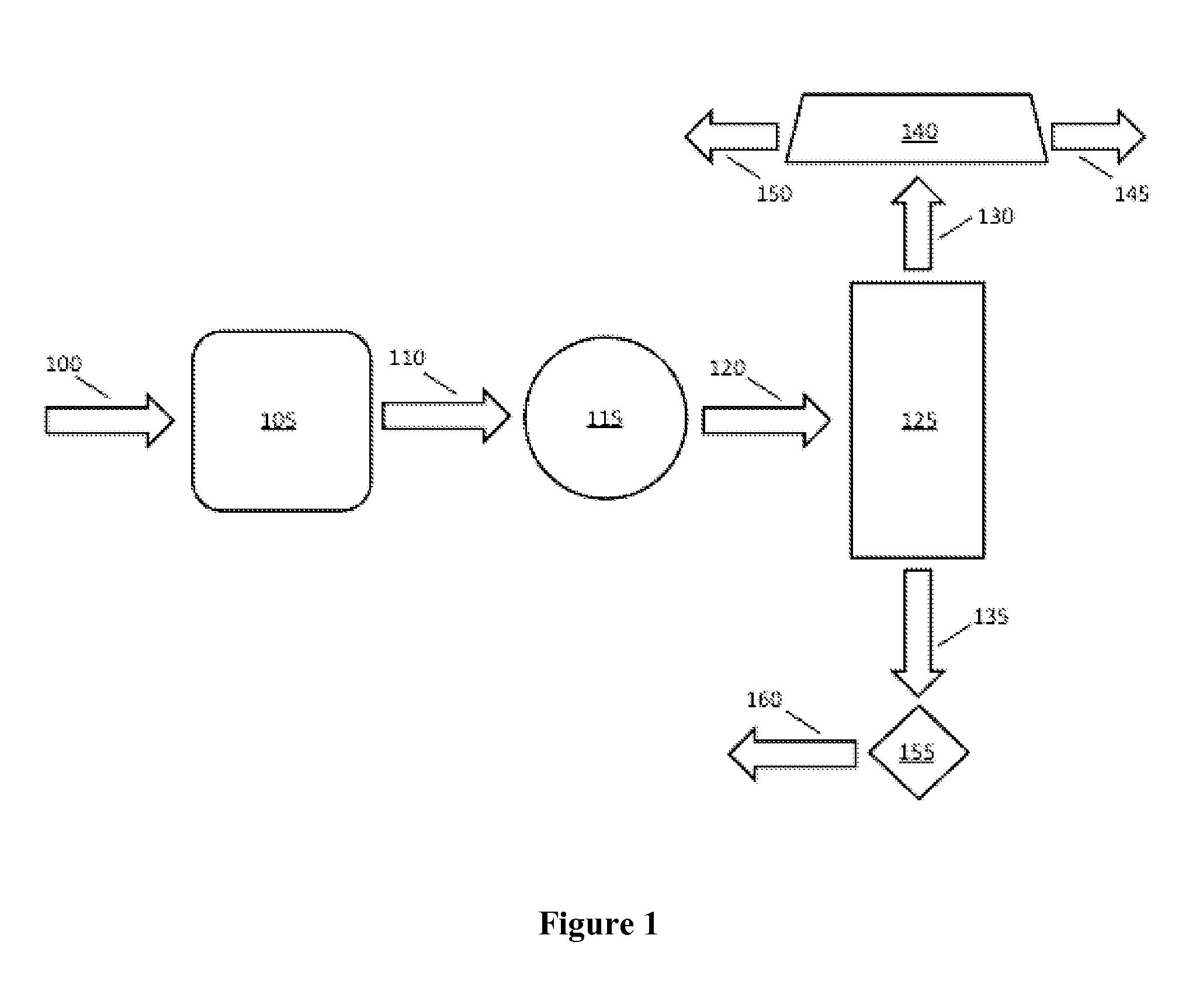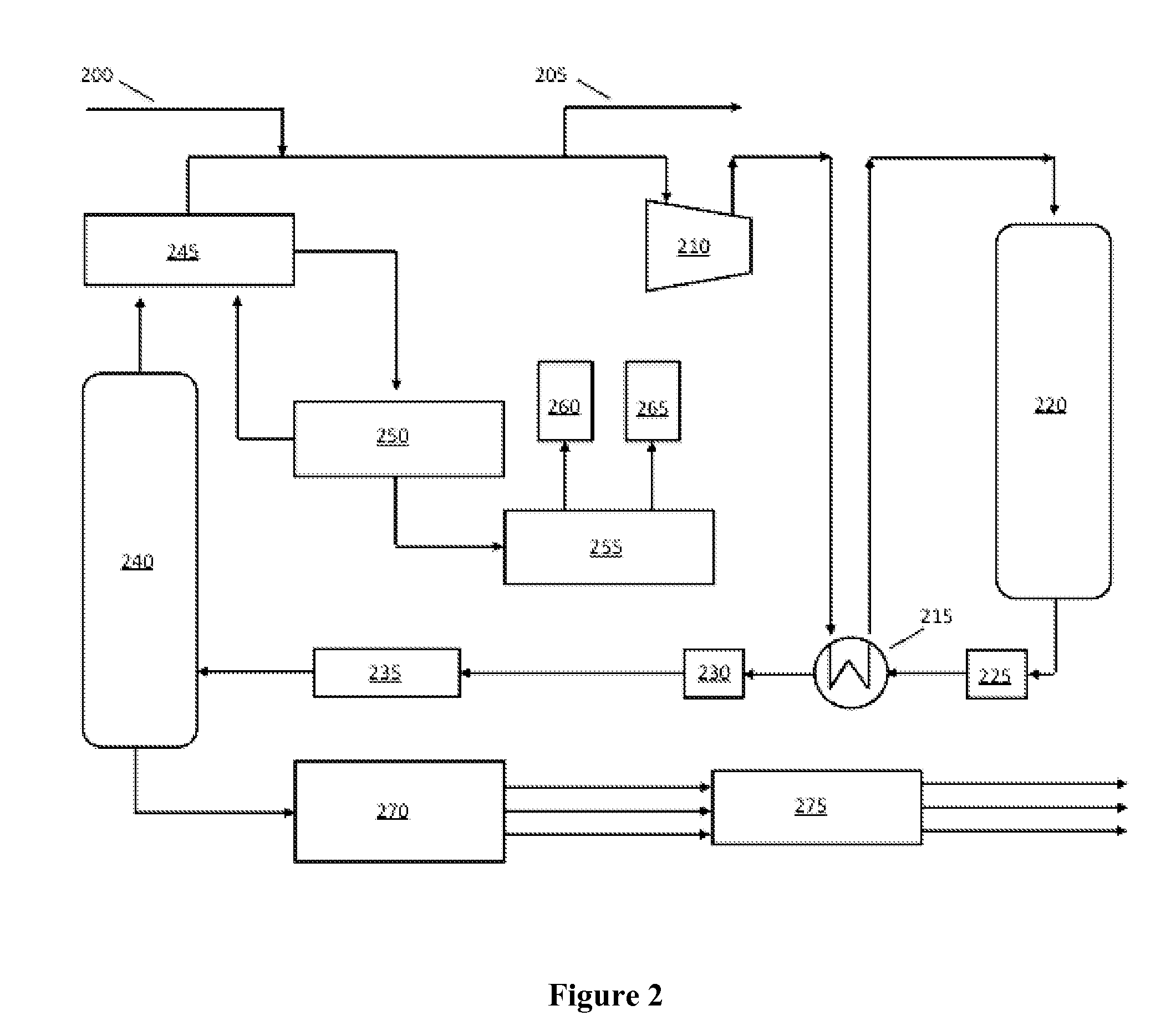Conversion of organosulfur compounds to hydrogen sulfide in mixed alcohol synthesis reactor effluent
a technology of mixed alcohol synthesis and effluent, which is applied in the direction of hydrogen sulfide, bulk chemical production, separation processes, etc., can solve the problems of reducing the efficiency of the mixed alcohol synthesis reactor, and reducing the overall sulfur content. , the effect of reducing the number of process steps and/or equipmen
- Summary
- Abstract
- Description
- Claims
- Application Information
AI Technical Summary
Benefits of technology
Problems solved by technology
Method used
Image
Examples
Embodiment Construction
[0014]It should be noted that while the following description is drawn to methods and devices for generation of mixed alcohol products from syngas, various alternative configurations are also deemed suitable and may applied to the production of other products from syngas precursors, including formaldehyde, acetic acid, propylene, esters, plastics, and liquid fuels. One should appreciate that, in addition to sulfur-containing compounds, the inventive concept may be applied to contaminants other than sulfur and sulfur containing compounds, notably ammonia and other nitrogen containing contaminants. Such contaminants may be present in a syngas stream prior to entry into processing or may be generated during processing steps.
[0015]One should also appreciate that the disclosed techniques provide many advantageous technical effects including improved removal of organosulfur compounds from mixed alcohol products derived from syngas, and improved efficiencies in regeneration of materials ut...
PUM
| Property | Measurement | Unit |
|---|---|---|
| acid gas | aaaaa | aaaaa |
| heat | aaaaa | aaaaa |
| stability | aaaaa | aaaaa |
Abstract
Description
Claims
Application Information
 Login to View More
Login to View More - R&D
- Intellectual Property
- Life Sciences
- Materials
- Tech Scout
- Unparalleled Data Quality
- Higher Quality Content
- 60% Fewer Hallucinations
Browse by: Latest US Patents, China's latest patents, Technical Efficacy Thesaurus, Application Domain, Technology Topic, Popular Technical Reports.
© 2025 PatSnap. All rights reserved.Legal|Privacy policy|Modern Slavery Act Transparency Statement|Sitemap|About US| Contact US: help@patsnap.com


